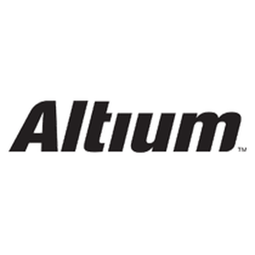Technology Category
- Networks & Connectivity - RF Transceivers
- Processors & Edge Intelligence - Microcontrollers & Printed Circuit Boards
Applicable Industries
- Electrical Grids
- Equipment & Machinery
Applicable Functions
- Product Research & Development
Use Cases
- Time Sensitive Networking
- Virtual Prototyping & Product Testing
Services
- Hardware Design & Engineering Services
- Training
About The Customer
TVonics is a UK-based manufacturer of digital TV set-top boxes. The company was formed in late 2004 and is based in South Wales, UK. It reunites a talented former Sony design team which collectively has more than 60 years of experience in the design and manufacture of digital set-top boxes and televisions for the mass market. The team brings together expertise in semiconductor device design and applications to ensure overall in-depth understanding of the entire system. TVonics has successfully shipped 280,000 units in just three years, carving out a significant share of the UK market for itself. The company makes products for retailers including DSGi, Tesco, Argos, and Marks & Spencer, as well as selling under its own brand.
The Challenge
TVonics, a UK-based manufacturer of digital TV set-top boxes, was looking to differentiate itself in a highly competitive market. The company aimed to offer stylish, sleek, and energy-efficient products, which required strict design criteria at the board level, particularly for form factor and power consumption. The products also needed to offer class-leading signal reception and be designed for cost-effective manufacture. Furthermore, the company set itself challenging development time scales. For instance, the MDR-200 Digital TV Receiver, a significant redesign of an existing product, was expected to go from drawing board to manufacture in just four months. As a startup with a small design team and limited resources, TVonics was in search of a cost-effective design tool that was easy to use and came with good UK support.
The Solution
TVonics opted for Altium Designer, a tool that the design team was already familiar with from their time at Sony. The company now uses Altium Designer in the development of all its products. The PCBs typically have two or four layers and range in size from about six by four inches to the latest 'match box sized' set box which has a PCB of just two-and-a-half by two inches. The software allows the team to reproduce entire sections of the design in other parts of the board, which has specifically helped them achieve very low power consumption. The team was able to copy parts of the design that had already been power-optimized, then edit them as required, saving about two months in development time. The software also offers powerful graphical manipulation and a comprehensive set of design rules that can be easily edited and back-applied to the design.
Operational Impact
Quantitative Benefit

Case Study missing?
Start adding your own!
Register with your work email and create a new case study profile for your business.
Related Case Studies.

Case Study
Smart Water Filtration Systems
Before working with Ayla Networks, Ozner was already using cloud connectivity to identify and solve water-filtration system malfunctions as well as to monitor filter cartridges for replacements.But, in June 2015, Ozner executives talked with Ayla about how the company might further improve its water systems with IoT technology. They liked what they heard from Ayla, but the executives needed to be sure that Ayla’s Agile IoT Platform provided the security and reliability Ozner required.

Case Study
IoT enabled Fleet Management with MindSphere
In view of growing competition, Gämmerler had a strong need to remain competitive via process optimization, reliability and gentle handling of printed products, even at highest press speeds. In addition, a digitalization initiative also included developing a key differentiation via data-driven services offers.

Case Study
Predictive Maintenance for Industrial Chillers
For global leaders in the industrial chiller manufacturing, reliability of the entire production process is of the utmost importance. Chillers are refrigeration systems that produce ice water to provide cooling for a process or industrial application. One of those leaders sought a way to respond to asset performance issues, even before they occur. The intelligence to guarantee maximum reliability of cooling devices is embedded (pre-alarming). A pre-alarming phase means that the cooling device still works, but symptoms may appear, telling manufacturers that a failure is likely to occur in the near future. Chillers who are not internet connected at that moment, provide little insight in this pre-alarming phase.

Case Study
Premium Appliance Producer Innovates with Internet of Everything
Sub-Zero faced the largest product launch in the company’s history:It wanted to launch 60 new products as scheduled while simultaneously opening a new “greenfield” production facility, yet still adhering to stringent quality requirements and manage issues from new supply-chain partners. A the same time, it wanted to increase staff productivity time and collaboration while reducing travel and costs.

Case Study
Integration of PLC with IoT for Bosch Rexroth
The application arises from the need to monitor and anticipate the problems of one or more machines managed by a PLC. These problems, often resulting from the accumulation over time of small discrepancies, require, when they occur, ex post technical operations maintenance.

Case Study
Data Gathering Solution for Joy Global
Joy Global's existing business processes required customers to work through an unstable legacy system to collect mass volumes of data. With inadequate processes and tools, field level analytics were not sufficient to properly inform business decisions.







